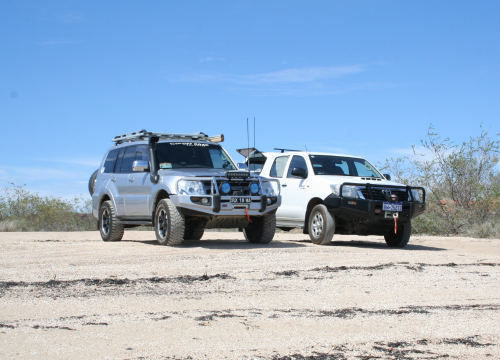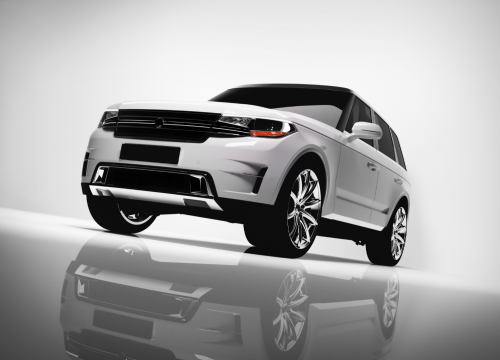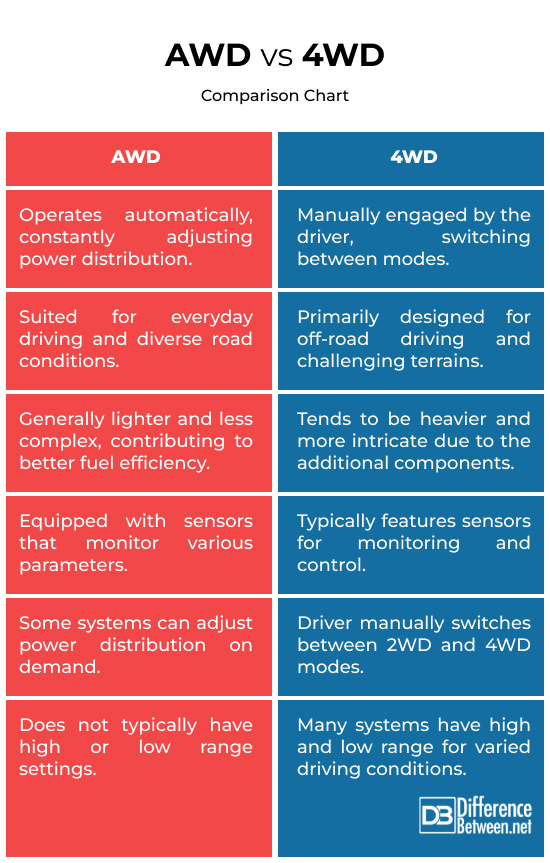Do you have a penchant for off-road adventures? If you’re a serious adventurer, you might want to consider an AWD or a 4WD vehicle, depending on your needs. Both are great options, as they send power from the engine to all four wheels. While both are often used interchangeably, there are some crucial differences between AWD and 4WD that you need to understand before choosing the right one.
So, if you’re in the market looking for a pickup or SUV, read on. In this article, we’ll give you a few handy pointers to help you choose between the two.

What is AWD?
An all-wheel-drive (or AWD) is a drivetrain system that automatically distributes power to all four wheels simultaneously. Unlike traditional two-wheel-drive systems that power either the front or rear wheels, AWD constantly monitors and adjusts the distribution of power based on driving conditions. This helps improve stability and traction, thereby balancing the fuel economy of the vehicle.
The power distribution is typically managed by a center differential, which ensures that each wheel receives an optimal amount of torque based on factors like wheel slip, road conditions, and the driver’s input. AWD vehicles are equipped with sensors that monitor various parameters, such as wheel speed, throttle input, and steering angle. AWD is well-suited for diverse weather conditions, making it advantageous in rain, snow, or mud.

What is 4WD?
Four-Wheel Drive (4WD), also known as 4×4, is a drivetrain system where power is sent to all four wheels simultaneously and can usually be engaged or disengaged manually. Unlike AWD, 4WD systems are typically manually engaged by the driver when additional traction is needed. 4WD is particularly beneficial for off-road driving and challenging terrains where additional traction is crucial.
A key component of 4WD systems is the transfer case, which is responsible for splitting and distributing power between the front and rear axles. When engaged, the transfer case sends power to both the front and rear axles, providing traction to all four wheels. In many 4WD vehicles, the driver can switch between 2WD (two-wheel drive) and 4WD modes, depending on the driving conditions.
Difference between AWD and 4WD
Engagement
AWD systems operate automatically, constantly adjusting power distribution to each wheel based on real-time conditions without driver intervention. 4WD systems are typically manually engaged by the driver, allowing them to switch between two-wheel drive (2WD) and four-wheel drive (4WD) modes as needed.
Driving Conditions
AWD is suited for everyday driving and diverse road conditions, providing improved traction on wet or slippery surfaces. It is ideal for all-weather performance. 4WD is primarily designed for off-road driving and challenging terrains, offering enhanced traction and control in situations like mud, snow, or rocky terrain.
Manual vs. Automatic
AWD operates automatically without driver input, continuously adjusting power distribution based on sensors and control systems. It is equipped with sensors that monitor various parameters, such as wheel speed, throttle input, and steering angle. Unlike AWD, 4WD systems are typically manually engaged by the driver when additional traction is needed.
Complexity and Weight
AWD is generally lighter and less complex than 4WD systems, which contributes to better fuel efficiency in regular driving conditions. 4WD tends to be heavier and more intricate due to additional components like a transfer case, which makes it suitable for more demanding applications but potentially impacts fuel economy.
AWD vs. 4WD: Comparison Chart

Summary
In summary, AWD is a versatile drivetrain system that continuously and dynamically distributes power to all four wheels, offering improved traction and control in various driving conditions. 4WD is also a versatile drivetrain system that allows manual engagement of all four wheels for improved traction, making it particularly valuable for off-road driving and challenging conditions. Whether prioritizing all-weather performance on city roads or seeking off-road adventures, the choice between the two depends on specific use cases. We hope you find this article helpful.
FAQs
Which one is better, AWD or 4WD?
The choice between AWD and 4WD depends on your specific needs. AWD is generally better for everyday driving and varied road conditions, while 4WD is preferred for off-road adventures and challenging terrains.
Can an AWD be 4X4?
While the terms are sometimes used interchangeably, they represent different systems. AWD is a full-time system that automatically distributes power to all wheels, while 4X4 (or 4WD) is often manually engaged and can be switched between two-wheel and four-wheel drive.
What are the disadvantages of AWD?
Some disadvantages of AWD include potential added weight and complexity, which can impact fuel efficiency. Additionally, AWD systems might not provide the same level of off-road capability as dedicated 4WD systems.
Does AWD use more gas?
AWD systems can result in slightly lower fuel efficiency compared to two-wheel-drive systems due to the additional weight and mechanical components. However, advancements in technology have mitigated this difference in many modern AWD vehicles.
Is 4WD better than AWD in snow?
4WD is often considered better than AWD in deep snow or challenging off-road snow conditions. The ability to manually engage 4WD provides more control, especially in situations where maximum traction is required.
Is AWD as good as 4WD in the snow?
AWD can perform well in snowy conditions, providing improved traction compared to two-wheel-drive vehicles. While not necessarily as capable as 4WD in extreme off-road snow situations, AWD is still effective for navigating snowy roads and slippery surfaces.
- Difference Between Caucus and Primary - June 18, 2024
- Difference Between PPO and POS - May 30, 2024
- Difference Between RFID and NFC - May 28, 2024


AWD is not developed for ideal off-road use because they don’t have a standard 2-speed transfer case or 4-wheel drive low range gearing that are normally found in any 4WD models.
Reply
I’m not too familiar with AWD systems, but I do know that power delivery to all four wheels at the same time on a 4WD system is a common misconception. It is possible by purchasing a locking differential or buying a vehicle that includes the pricey components, such as the Jeep Rubicon or Dodge Power Wagon. These provide, at significant cost optional front and rear locking differentials, enabling delivery of power to all four wheels. Other models such as the Toyota Tacoma and FJ Cruiser offer an option for a rear-only locking differential. The point is the majority of of 4WD systems only deliver power to one wheel per axle. I suspect the same applies to AWD systems, but they use traction control and their ABS system to stop a spinning wheel, sending power to the opposite wheel.
Reply